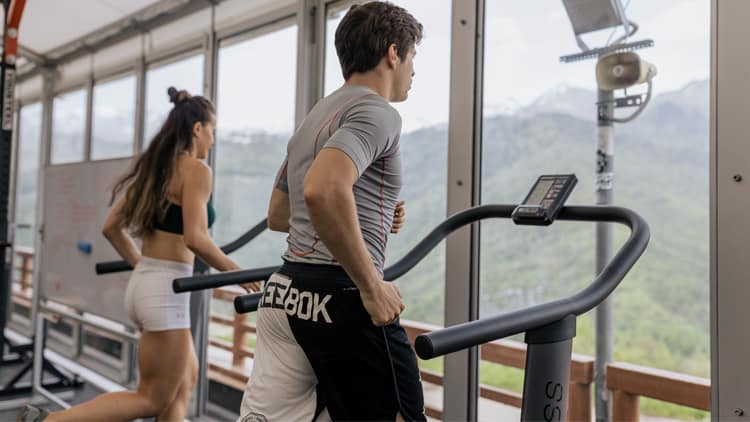Rehabilitation is an essential process of recovery after hip fracture surgery. The patient will need to undergo a series of physical therapy and might be admitted to the hospital for a longer time. The therapy requires a series of necessary exercises for improving the fractured hip.

What Is A Rehabilitation Therapy?
The purpose of rehabilitation is to help patients get back their lives and improve their condition. Most importantly, regain your independence. Patients who have a hip fracture would likely undergo surgery.
Most people will need to fix their fracture. The surgery might vary, and so do the results. Nonetheless, the healthcare practitioners will require rehabilitation to heal their injury completely.
Moreover, your doctor, a physiatrist, physical therapist, rehab nurse, and other members of the medical team will oversee your rehabilitation process. Only a licensed personnel can formulate a treatment plan customied for your condition.
When Should The Rehabilitation Start After Fracture Surgery?
Rehabilitation is essential for a patient’s body, especially during the first 24 hours of the surgery. Although rest is an integral part of recovery, too much bed rest may cause other complications such as deconditioning, pressure sores, blood clots, and pneumonia. Getting your body active as soon as your body recovers would significantly help.
You must then understand that the treatment plan depends on the gravity of the fracture and its location. It will also be based on your post-operative condition. It also has to do with an individualized process suitable to your state. Determining how long you will be under physical therapy can be conditional.
The healing process can take several months with rehabilitation. In some cases, people who have a hip fracture that visits rehabilitation can return to their work after four weeks to four months after their surgery.
What Exercises Should A Patient Do For Physical Therapy?
As mentioned, only acclaimed and licensed professional medical persons are allowed to prepare a rehabilitation plan for the patient. They will prepare it according to their wellbeing and condition.
The exercises and activities will be under their supervision and ensure only performing the ones your physiatrist recommends. To help you better visualize the drills, here are the common types of exercises a patient might come across.
Post-operative
The primary goal of post-operative exercises is to increase muscle strength and gain control. It will also help the circulation back to the lower half of your body and avoid blood clots. It may be uncomfortable at first, but the following exercises can help improve your recovery rate. The following exercises are the common type of exercises a patient might perform.
Ankle Pumps
The starting position your legs stretched out in front of you while in your sitting position with your back straight. Then, bend an ankle upwards so that it seems like pointing your toes towards you. Next, you can rest that ankle and do the same to the other. Repeat this routine ten times on each of your feet. It is like flexing your foot towards your body. This exercise helps in preventing circulation problems.
Knee Bends
The bed will support this type of exercise. You need to slide a foot towards your buttocks. It is now in a bending position, and try to keep the heel on the bed. Hold this position for five to ten seconds while preventing the knee from rolling inward. After five or ten seconds, you can straighten your leg and repeat on the other foot. You can do this ten times every day.
The knee bends exercise will help the blood to circulate to your glutes, calves, and quads as they contract. This activity helps your lower body parts prevent the risk of strains.
Bridging
For the first 24 hours of post-operative, you may need assistance with the bridging exercise. This exercise will require you to lie on your back. Then, you will need to bend your knees and tighten your abdominal muscles as you raise your hips.
The goal is to raise your hips until they align with your knees and shoulders. You can hold the position for three deep breaths and slowly back down.
This bridging exercise benefits from strengthening your butt muscles, hamstrings, and other core muscles. It will also help improve your pelvis to stabilize and aid you during walking.
Three To Five Days From Postoperative
Eventually, after a few days or weeks after the surgery, the patient can walk again for short distances. Performing the light exercises would help them with their recovery. So, they will need another routine to help them heighten their training. This is only possible if the physiatrist approves of it.
Walking
A recovering patient will need to stand and walk as the time comes. It is also a way for their hips to recover. It might be hard at first. That is why they will need to walk with the assistance of crutches or a walker. At this point, the patient can comfortably stand already.
So, they will need to stand and balance themselves on the crutches or a walker. The patient will be assisted by their healthcare worker and advised on how much weight to put on their legs until they can walk independently.
It would be best to walk slowly and as smoothly as possible. The goal is to improve hip movement and endurance. The patient must at least walk for ten minutes.
Additionally, full recovery might take four mounts or more. So, constant exercising is necessary. As time passes by, their exercises will also improve. After walking with a crutch or walker and regaining balance, skills can now walk with a crane. During this time, it is now safe to walk on a treadmill.
Moreover, your physiatrist might also recommend you to walk on different types of treadmills. You can then use the equipment to increase the strength you lower extremities until you fully recover. You can walk for five to ten minutes multiple times a day, for starters.
Stair Climbing
Stair climbing and descending is an excellent way to tone your muscles and help improve your hips. It also helps enhance your endurance and will require flexible skills. Before you perform this activity, ensure that your healthcare worker is aware, and they give you clearance for this.
To perform this activity, you will need a handrail to help you ascend the stairs. Since you will still probably be using the crutches, you might only be able to take a step at a time. As you perform this activity, you will need to remember the psychiatrist’s note of the amount of weight you can put on your bad leg.
This will significantly limit your ability to climb and go back down the stairs properly, but as you become stronger, you will be able to do this foot over foot.
Final Thoughts
Physiatrists and related people formulate the activities given to rehabilitating patients. In this part of the recovery, they are mainly responsible for your wellbeing. Even so, therapy will not be possible without your full cooperation. Thus, to successfully recover, you will need to perform the formulated routine diligently.


